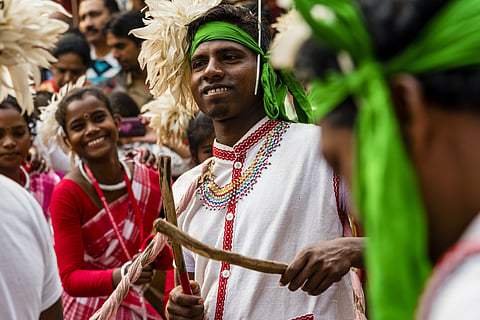
- Destinations
- Experiences
- Stay
- What's new
- Celebrating People
- Responsible Tourism
- CampaignsCampaigns
- SubscribeSubscribe
- Buy Now

Numbering at least 370-500 million, indigenous peoples represent the more significant part of the world's cultural diversity. On this International Day Of The World's Indigenous Peoples, we see how travel is one of the best ways to learn about these rich and ancient cultures and understand their essential role in sustaining the diversity of the world's cultural and biological landscapes.
The best way to learn about the indigenous peoples is to visit their remote homelands. For instance, Odisha is one of the states where the richness of Adivasi cultures remains reserved. Read our story about an adivasi food festival held near the Niyamgiri hills in the state. Indigenous foods are all the rage around the world. But for these communities, these ancient grains and forest-foraged foods are part of an identity that plays a role in protecting their habitats.
Some fantastic museums are showcasing the history, lifestyle and culture of the various tribes of India, the Madhya Pradesh Tribal Museum in Bhopal, the Tribal Culture Centre in Jamshedpur, the Museum of Tribal Arts and Artefacts in Bhubaneswar, the Tribal Cultural Museum in Silvassa, Tribal Cultural Museum in Pune, etc.
Why not go on a guided walk through the tribal lands with a friendly community member as your guide For instance, Vanvadi in Maharashtra (close to Pune) is a forest collective where they conduct food walks with the Adivasis, identifying the many trees and plants that are part of their dishes. The mahua (or Indian butter tree), for instance, with its sweet flowers, which are used to make jaggery and porridge and also fermented to make liquor. Read about it here.
Look for places where you get a taste indigenous cuisine. In Ranchi, we found Ajam Emba, a restaurant trying to revive and revitalise Adivasi cuisine as an inseparable part of Jharkhand's culture. Read our account of a meal here.
From terracotta to casting images in metal through the ancient lost wax process to weaving textiles, the tribal people of India produce a fantastic range of handcrafted products. Some are protected under the Geographical Indication mark.
